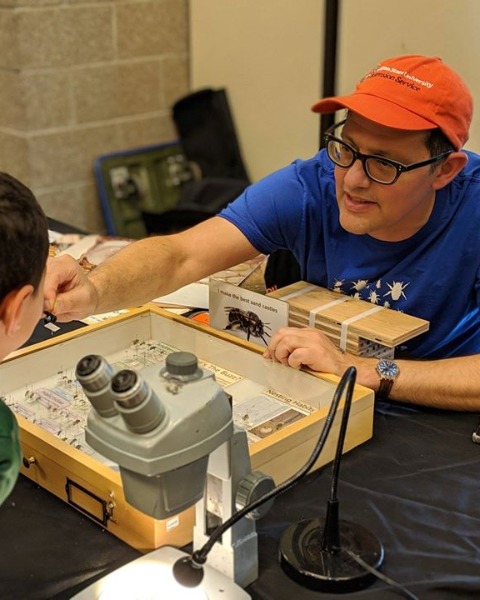P-IE
Student Competition 10-Minute Paper
Undergrad 10-min: P-IE, Pollinators
Robust honey bee colonies are worth their weight in fruit: Stronger Apis mellifera colonies could increase yield in highbush blueberry (Vaccinium corymbosum)
On-Demand

Kennedy Grant
Corvallis, OR

Andony Melathopoulos
Oregon State University
Corvallis, Oregon- Lw
Lisa wasko DeVetter
Washington State University
Mount Vernon, Washington
Presenting Author(s)
Co-Author(s)
Beekeepers continuously report that their colonies are developing persistent diseases during the blueberry pollination season, while research suggests there are benefits to increasing the number of rental colonies per hectare. The relationship between demanding increased density and the deteriorating health of the hives is problematic, as closer proximity may increase likelihood and intensity of brood infections. We were interested in determining whether there was an alternative approach to increasing yield that benefits both beekeepers and growers; not by adding additional colonies per hectare, but by supplying populous, higher-quality colonies.
Over the course of two years (2019/2020), we characterized the effect of variation in average colony strength on blueberry yield at 25 total commercial fields in Oregon stocked with identical densities (10 colonies/ha). Randomly selected colonies from each field were recorded to obtain the rate of returning forager bees per minute, which we previously determined is highly correlated to the colony’s true adult bee population. Fruit set and yield data were provided by farmers from randomized bushes within each field.
We found considerable variation in the average strength of colonies at each field, ranging from an estimated 10,300 to 30,700 adult worker bees per colony. While average colony strength did not predict variation in fruit set, it was a strong predictor in variation in yield (R2=0.42), independent of year. We observed a 45,000 kg/ha difference between fields with weak versus strong colonies, suggesting higher pollination benefits could be achieved without increasing hive density.
Over the course of two years (2019/2020), we characterized the effect of variation in average colony strength on blueberry yield at 25 total commercial fields in Oregon stocked with identical densities (10 colonies/ha). Randomly selected colonies from each field were recorded to obtain the rate of returning forager bees per minute, which we previously determined is highly correlated to the colony’s true adult bee population. Fruit set and yield data were provided by farmers from randomized bushes within each field.
We found considerable variation in the average strength of colonies at each field, ranging from an estimated 10,300 to 30,700 adult worker bees per colony. While average colony strength did not predict variation in fruit set, it was a strong predictor in variation in yield (R2=0.42), independent of year. We observed a 45,000 kg/ha difference between fields with weak versus strong colonies, suggesting higher pollination benefits could be achieved without increasing hive density.


